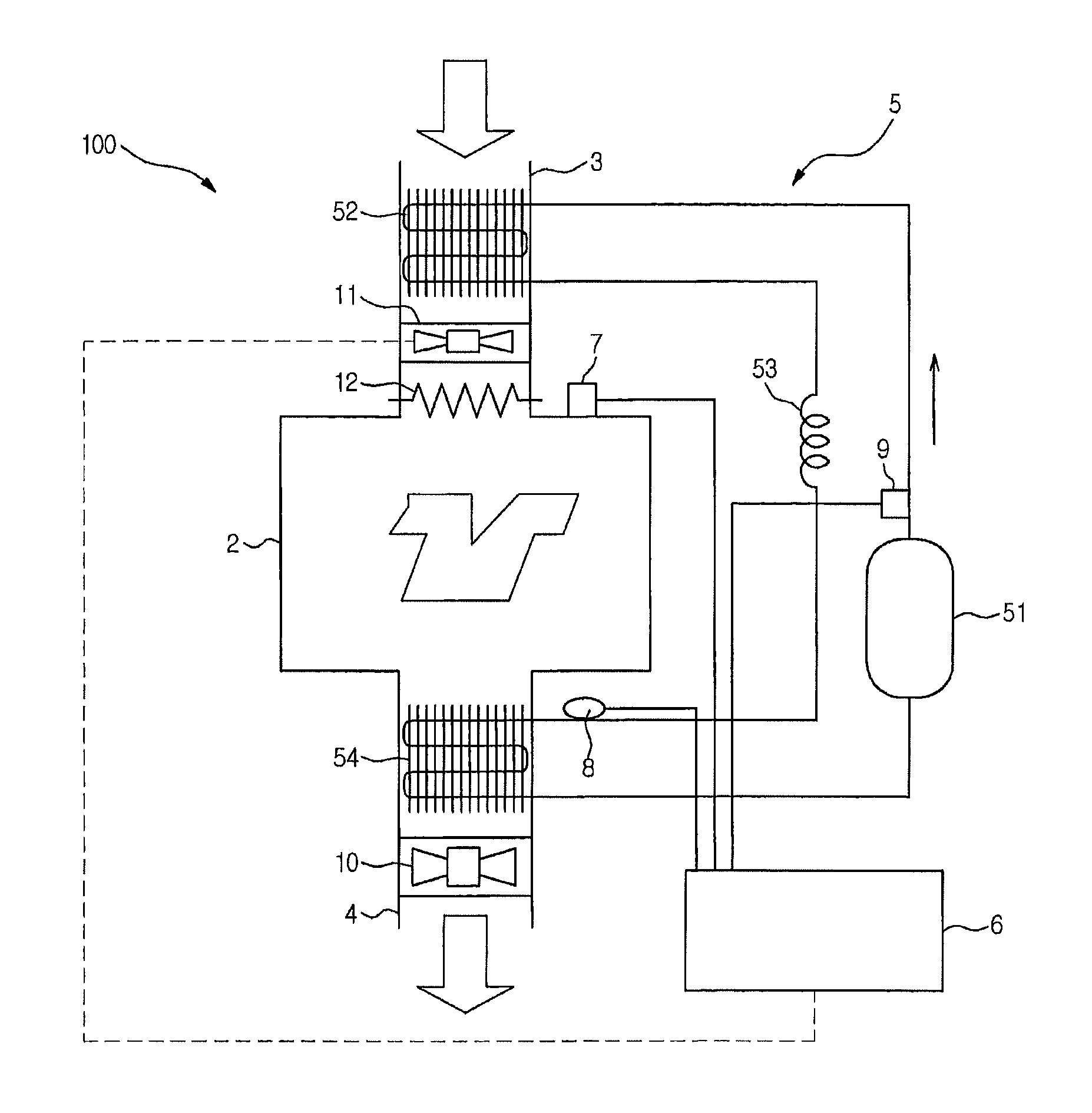Heat pump type clothes dryer with secondary blowing mechanism
a technology of heat pump and dryer, which is applied in drying machines, lighting and heating apparatus, furnaces, etc., can solve the problems of increased noise of fans, increased power consumption, and increased pressure loss of air exhaust lines, so as to reduce the amount of air introduced and increase the internal pressure of the drum
- Summary
- Abstract
- Description
- Claims
- Application Information
AI Technical Summary
Benefits of technology
Problems solved by technology
Method used
Image
Examples
Embodiment Construction
[0024]Reference will now be made in detail to the embodiments, examples of which are illustrated in the accompanying drawings, wherein like reference numerals refer to like elements throughout. The embodiments are described below by referring to the figures.
[0025]Referring to FIG. 3, a clothes dryer according to an exemplary embodiment is illustrated. The clothes dryer, which is designated by reference numeral 100, uses a suction / exhaust system. As shown in FIG. 3, the clothes dryer 100 includes a drum 2 to accommodate clothes, an air suction or intake line 3 to suck air into the drum 2, an air exhaust line 4 to exhaust air from the drum 2, a heat pump circuit 5, and a controller 6 to control various parts of the clothes dryer 100. A drum pressure sensor 7 is installed in the drum 2. The drum pressure sensor 7 functions as a pressure measurer to measure the internal pressure of the drum 2.
[0026]The heat pump circuit 5 includes a refrigeration cycle in which a compressor 51, a radiat...
PUM
 Login to View More
Login to View More Abstract
Description
Claims
Application Information
 Login to View More
Login to View More - R&D
- Intellectual Property
- Life Sciences
- Materials
- Tech Scout
- Unparalleled Data Quality
- Higher Quality Content
- 60% Fewer Hallucinations
Browse by: Latest US Patents, China's latest patents, Technical Efficacy Thesaurus, Application Domain, Technology Topic, Popular Technical Reports.
© 2025 PatSnap. All rights reserved.Legal|Privacy policy|Modern Slavery Act Transparency Statement|Sitemap|About US| Contact US: help@patsnap.com



